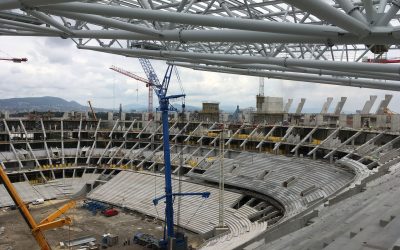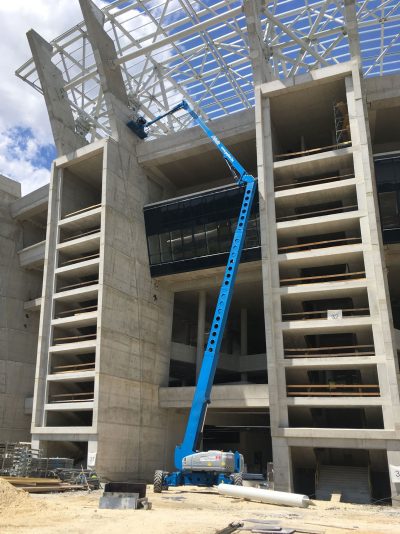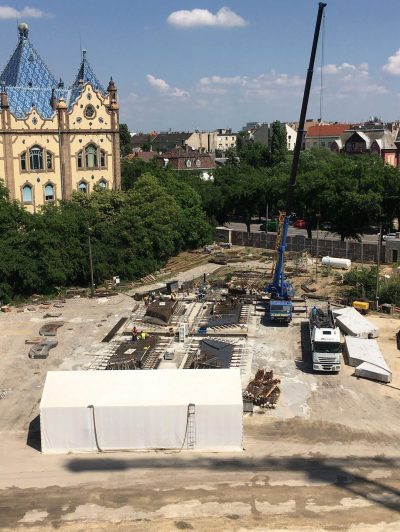Budapest, Hungary
Puskás Aréna, Budapest
One of our most important reference projects is the new Puskás Aréna in Budapest. The 550-million-euro stadium was completed in 2019 as the successor to the legendary Ferenc Puskás Stadium dating from 1953, and offers more than 67,000 seats. The imposing architecture is thereby defined by the expressive, towering pylons, which create an intentional link to the characteristic aesthetics of the old stadium.
In order to complete the new building, which was designed by György Skardelli from the Budapest architectural office KÖZTI, around 700 employees worked on the construction site every day. The steel construction company Bayer Construct, which had been commissioned by the Hungarian government with the realisation of the reinforced concrete construction, was also involved in the project. One of the most important sections was the completion of the 64 reinforced concrete components that together support the stadium roof. As it would have been extremely difficult to transport the nine-metre-long, 2.5-metre-wide, 60-ton beams, the components were manufactured entirely on site. Keeping to the tight schedule in conjunction with the unexpectedly bad weather proved to be a major challenge. The situation was further complicated by the fact that although the construction of the steel roof had already been partially concluded, it could only be finally installed once the steel girders had been completed.

In order to achieve a fast, mobile solution for an accelerated curing of the components in this challenging situation, we developed a project-specific system with a powerful low-pressure steam generator which was precisely tailored to the specified formwork – in only two weeks. After the assembly of the boiler and the installation of all the pipelines and steam valves, as well as an in-depth training of the Bayer Construct staff, our customer was able to get started immediately and complete the 64 components in less than four weeks. As a result, it was possible to realise the project in a significantly more cost-effective and energy-saving way and even to carry out the handover seven weeks before the agreed deadline.
The advantage of the applied technology is obvious: whereas traditional steam boilers require high amounts of energy during the heating phase and in operation in order to evaporate the water, the CureTec steam generators used provide steam within seconds. Plus, they are only in operation when moisture is actually needed. For maximum efficiency, the process water used to generate steam is fed directly into the combustion chamber and immediately enters the steam phase. Prior to this, the process water has already been used to cool all the components involved in the combustion process and is thus preheated. Likewise, the exhaust gases are also used to generate steam. This synergy results in an efficiency level of 98 per cent.


The specific design of the system was largely determined by the size and shape of the reinforced concrete beams and thus by the architecture and statics of the roof. In the course of completing the construction, the concrete was first poured into the pre-developed formwork and then exposed for six to seven hours, at predetermined points, to a quantity of steam calculated on the basis of the selected concrete and the prevailing weather conditions. The surrounding tent structure thereby provided an enclosed space with an optimised climate for controlled concrete curing.
